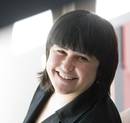Cartography before, now and here
It consists in selecting mapping. The author must choose the characteristics that will be faithful to him and those that will disfigure: surface, angle, distance... Because it is not possible to imagine a sphere on a plane. Leonhard Euler demonstrated this inability in 1775 and since then we know that all maps are wrong. Consequently, the projections of the world are always approximations to reality.
With this basic error, however, cartography is unusual for humans. It is about choosing well what the map is for, because the best will be one type of projection or another. The objectives can be practical: navigate, calculate routes, show demographic data...; or political: imagine in a concrete way the territories and states that make up the world, for example.
In this issue we have approached the historical and daily cartography. The mathematician Raúl Ibáñez Torres has limited the strategies of representation of the world and its advantages and achaques. Gaindegia geographer Mikel Aiestaran Olano tells us about the particular case of Euskal Herria. They, according to what they want to imagine, not only have to adapt the projection, but also the data.
The limit of the Euskalgeo portal is not a mathematical theorem. The distribution of statistical information in two states and three administrations requires this. In addition, the cartographic projections of France and Spain are not the same and do not always represent the data in the same way. However, Gaindegia and its Euskalgeo portal seek to overcome all non-mathematical limits. Because the title of the article clearly indicates, maps represent the world according to oneself.






